Valentine IX: A Tank Destroyer with Claws
17 min readIn the Spring of 1943, the variety of British tanks sent to the USSR dropped radically. Matilda tanks were no longer sent, the Churchill nearly vanished from shipping manifests. The Valentine remained the only type of tank sent by the British in large numbers. Even though the British themselves nearly stopped using it by the Spring of 1943, they were still in demand with the Red Army. This was especially true for the Valentine IX, the version with a 6-pounder cannon, which had to revert to the two-man turret.
Larger Caliber, Less Crew
Obsolescence of a 2-pounder gun for the British became apparent after the first clashes with German tanks in North Africa in the Spring and Summer of 1941. Then, in 1941, work began to improve the weapons of British tanks in mass production. The 6-pound (57 mm) anti-tank gun, work on which began in 1938, claimed the role of the main armament. Its mass production began only in 1942. The first versions of the anti-tank (Mk.II) and tank guns (Mk.III) were shorter than the original design. However, the 43-caliber gun was very successful. Even the thickening of the Pz.Kpfw.IV frontal armour to 80 mm did not protect the German tank from the fire of the new English gun.

To re-equip the Matilda tank with a new weapon, it was necessary to put a new turret on it, but further development work didn’t progress. The Churchill also had needed a new turret, but this modification was fortunate. Churchill III and Churchill IV were the most “long-living” British tanks, their combat career began in the battle for El Alamein and ended in the Spring of 1945 in Western Europe.
The Crusader and Valentine were less successful, as they also received a 6-pound cannon. In both cases, the turret had to be redesigned. The Crusader III saw battle first, and the new gun was clearly an improvement. However, it was still worse than American Sherman II and III tanks. The Crusader III’s career came to an end in the Spring of 1943. In the future, these tanks were used to make SPAAG chassis and tractors.
Valentine’s tank had to undergo a serious turret modification to receive a new turret. Using the Valentine III turret, the Vickers designers freed up space by reducing the turret to 2 man crew. The gun fit into the turret, but the coaxial machinegun and smoke bomb launcher were removed. This tank was supposed to be accepted into service as the Valentine VIII, but the order for this variant was cancelled. The fact is that by that time the British finally decided to switch to the GM 6004 diesel engine. Thus, the Valentine IX was born, the only version of the tank with a 6-pound cannon that fought as part of the British army.
Later there was an improved version, designated Valentine X . This version once again had a coaxial machinegun. Finally, the final modification of the tank, designated Valentine XI, received a 75-mm cannon. These tanks served in the British army until the end of the war, but only as commanders’ tanks with dummy guns. As for the Valentine IX, they appeared on the front lines by late 1942, but were removed from combat starting with the Spring of 1943.
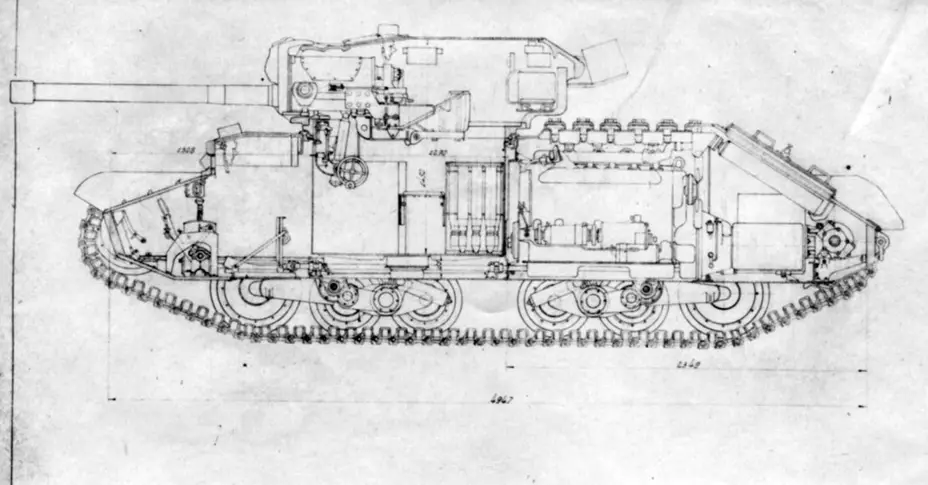
The USSR learned about the new type of tank right at the end of December of 1942. Soviet military representatives in England reported that 70 tanks of the new modification, armed with 57-mm cannons, would soon arrive in the USSR. The first batch of new British tanks arrived with the JW-53 convoy on February 27, 1943. By then, the Soviet military representatives in England were able to collect enough information about the Valentine IX. On January 21, 1943, at the request of the Soviet, a demonstration of these tanks was held in the 20th British Tank Brigade. According to English data, the 57-mm tank gun punched armour 40 mm thick at a distance of 1,829 meters and 65 mm at a distance of 914 meters. After reworking, the tank’s combat mass increased to 18-19 tons.
Soviet specialists had a number of questions about the reliability of the new tank, since British tank officers had mentioned the need to change the brakes every 400-600 kilometres. In addition, at the Vickers plant, it was reported that the load on the chassis was close to the limit. Senior Inspector K. Olkhovsky demanded that the British War Department send additional spare parts with tanks. March 8-9, Olkhovsky visited the Elswick Works Plant. There he learned that the move from the Valentine V to the Valentine IX was done without trials, as the increase in mass was deemed to be slight. There was also a strange situation with the acceptance of these vehicles. The War Ministry was incredibly trusting in its interactions with Vickers. Olkhovskiy learned about the modernization of the Valentine IX, on which the coaxial machinegun was to make a return. Finally, Vickers engineers let slip about the development of the Vanguard I, the unsuccessful replacement for the Valentine.
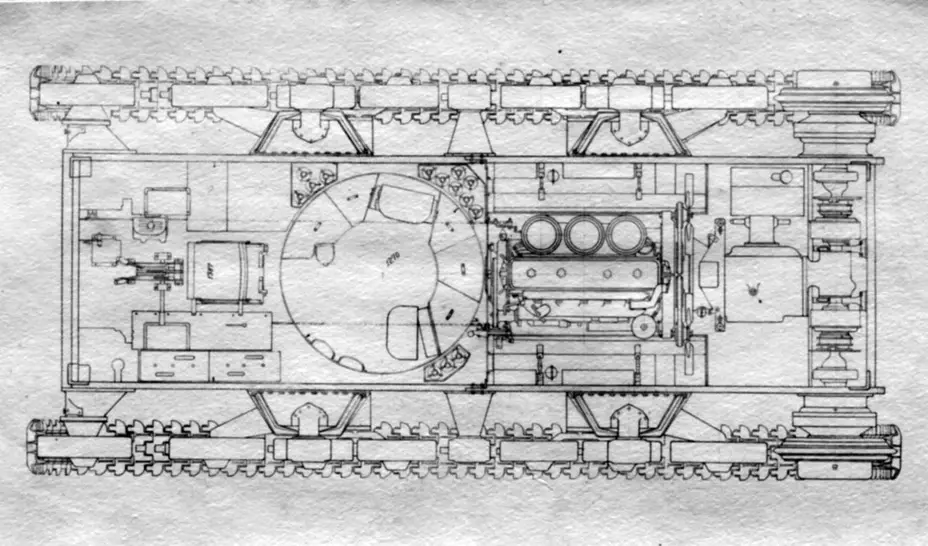
The introduction of a Valentine armed with a 6-pounder gun did not mean that it would immediately replace all previous versions. Simultaneously with the Valentine IX convoy JW-52, Valentine III arrived in the USSR, a similar pattern was observed in the following deliveries. After a long break in shipments by northern convoys, the tanks were shipped along the southern route. The most numerous variant was the Canadian Valentine VIIA. These tanks flowed through Iran, with 711 shipped in 1943. As for the Valentine IX, 49 were sent from the end of July to the end of August, 16 more in September, and 46 in December of 1943. To compare, 324 Valentine IX tanks arrived through the northern route, even with the interruptions. Also, 6 tanks arrived through Vladivostok.
In 1944, 91 Valentine IX tanks came through the southern route, most of which were used. In particular, 36 tanks of this type were received from Polish units stationed in Iraq. As for the northern shipments, there is a fairly large discrepancy. According to the reports, in December 1944, 221 tanks arrived in JW-55-JW-58 convoys, after which the shipments stopped. Including the 324 tanks that arrived in 1943, the total number of Valentine IX tanks that arrived through the north was 545 units. Meanwhile, documents dated July 1st, 1945, list 621 tanks of this type delivered through the northern ports.
Perhaps the discrepancy occurred due to the fact that quite a lot of tanks entered the USSR at the end of December 1943, which led to a 76 tank “surplus”. The fact that 621 is the wrong figure is also confirmed by British sources. According to them, 836 tanks of this type were sent to the USSR, and 818 arrived at their destination. If the number of tanks received through the northern route was 621, then the USSR would have received 863 tanks (621 through the north, 236 through the south, and 6 through Vladivostok). It’s hard to believe that the tanks multiplied en route, so the number 787 (545 through the north, 236 through the south, 6 though Vladivostok) sounds more believable.
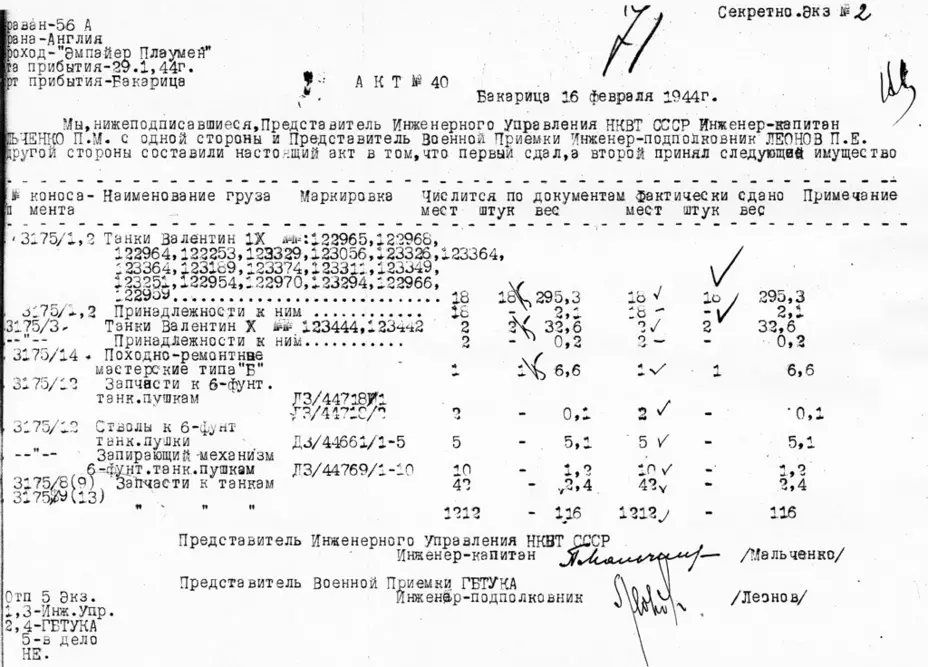
Separately worth mentioning Valentine X, the latest modification of the tank, which entered the Soviet Union. The very first tanks of this variant arrived with convoy JW-56A at the very end of January 1944, they were only recorded in February. Based on the acceptance records, most of these were tanks built at Elswick Works. A total of 64 tanks of this variant arrived in convoy JW-56-JW-58. This is almost consistent with the British data, according to which 74 tanks were sent to the USSR, 66 arrived. The British sent more than half of all Valentine X tanks to the USSR, as only 135 were produced. This tank was unlucky and almost never got in front of a camera.
A Tank Destroyer with Claws
Shortly after the arrival of the first Valentine IXs in the USSR, the Main Armored Directorate of the Red Army (GBTU KA) ordered to conduct field tests. Judging by the correspondence of Lieutenant-General B.G. Vershinina with the People’s Commissariat for Foreign Trade, the further supply of these tanks directly depended on the test results. It is possible that this order resulted in serious changes to Soviet purchasing policy in the West. Now the USSR received a small batch of tanks to try out before any large shipments of new vehicles.
At the beginning of 1943, the Red Army could have received from the Allies an even greater “surprise” than the Valentine IX. The British seriously planned to send Crusader III tank to the USSR. 36 tanks of this type were planned to be delivered in April 1943 by shipment JW-55. The following shipments JW-56 and JW-57 were supposed to send 421 more tanks. The British were trying to dispose of useless tanks that were replaced by the Sherman II, III, and V. Vershinin spoke out categorically against this “gift” in a letter written on March 11th, 1943, where he called the Crusader III a modern tank, but with thin armour. The Liberty engine was identified as another weakness. The “crusade” to the Red Army ended before it began.
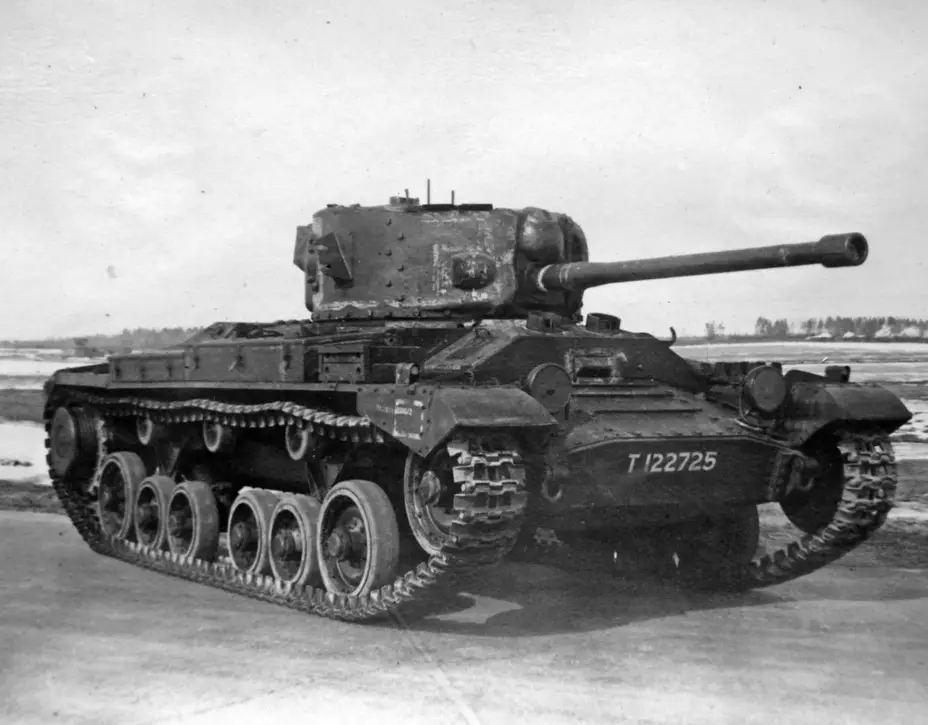
According to the test program signed by Vershinin, the Valentine IX was supposed to run a distance of 800 kilometres, 300 kilometers were to be on the motorway and 200 off-road. The trials would determine the performance on icy dirt and in snow banks. Firing trials to determine the rate of fire and penetration were also performed.
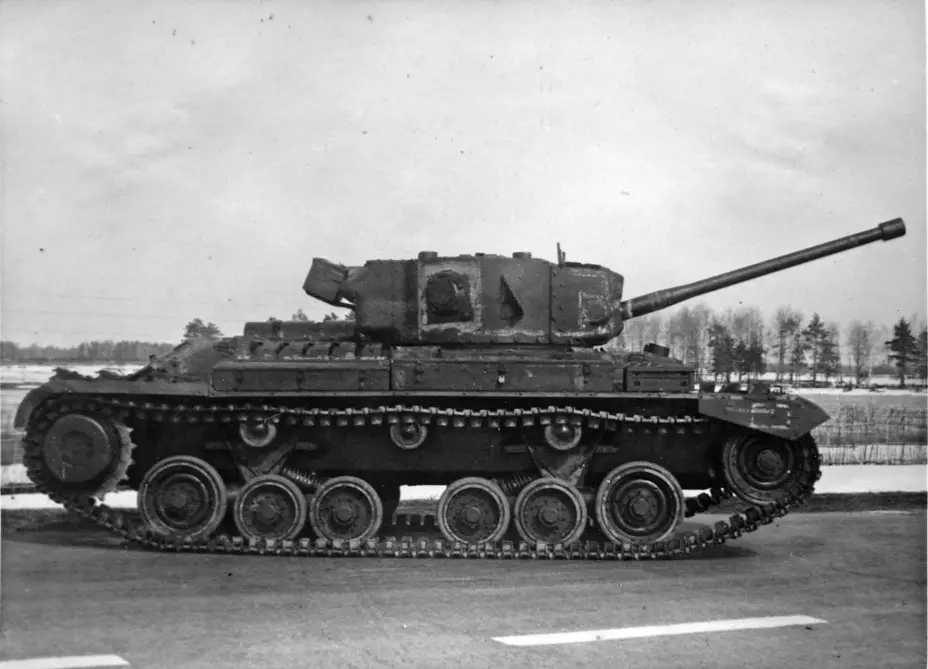
On March 14, Valentine IX with WD number T.122725 went to NIBT proving grounds. This tank, produced by the Elswick Works plant, arrived in the USSR on February 22, 1943, aboard the steamship ‘Mossovet’. It was assumed that in conjunction with the new tank, the Valentine III would also be tested. In fact, there was a clear mistake. A Valentine II was hidden under the designation “Valentine III”, the same one that is now in display at the Patriot Park. This tank with a WD number T.27543 has undergone a slight alteration: it received a “collar”, covering the padded shoulder strap in the front, as well as additional armour in the frontal part of the hull. The characteristics of the tank were also compared to those of the “Valentine III with a GMC engine”, likely the Valentine VII that was tested at the NIBT proving grounds in 1942.
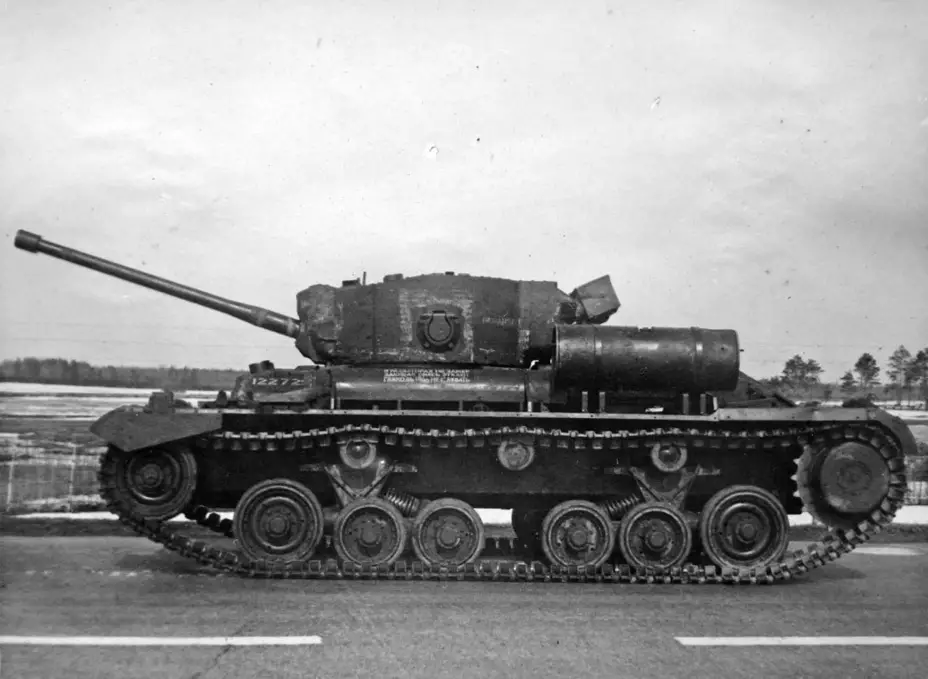
This stage of the trials revealed that not everything was as bad as it seemed from reports from England. It turned out that in reality, the Valentine IX’s combat mass was 17 tons, the same as the Valentine VII. Valentine II was a little lighter at 16.5 tons. Maintaining mass at the same level was possible due to a small decrease in the thickness of the side armour. This was acceptable, as tanks were mostly hit from the front. Experts noted the additional fuel tank of 148 litres. They were installed back on the Valentine IV, but the NIBT proving grounds did not receive such a tank. Overall changes to the chassis mirrored those made to tanks equipped with 2-pounder guns.
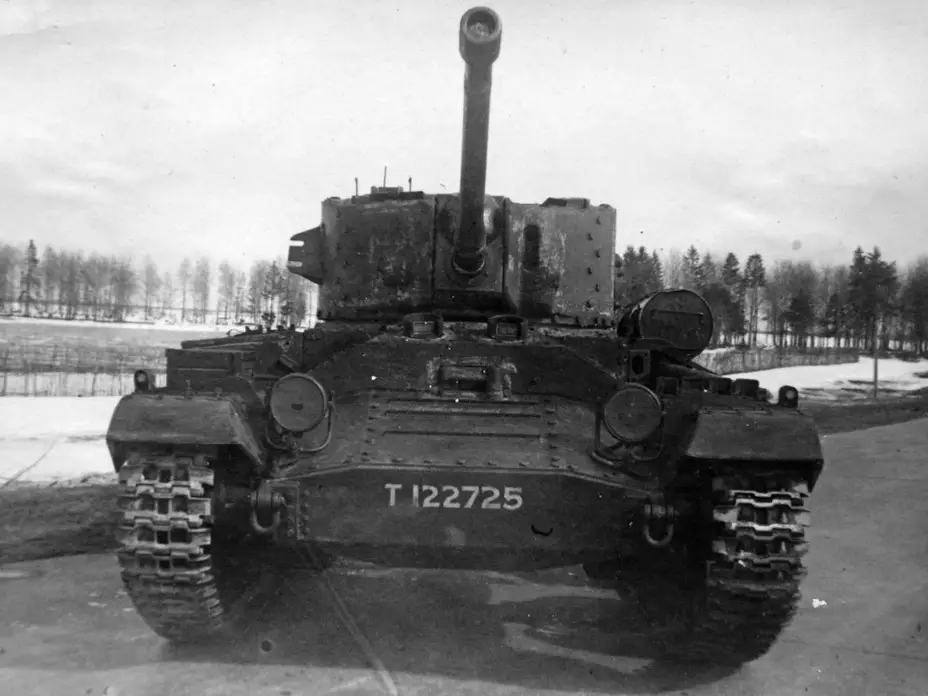
The turret drew the most attention among the testers. The Valentine became a champion in its class when it came to increasing the calibre of the gun. First, the 40 mm gun turret was enlarged to fit three men, then it held a 57 mm gun, then even a 75 mm gun was installed. This was managed by stretching out the front and rear of the Valentine III turret Due to the large size of the gun, the turret once again only fit two people, but now had two hatches. As already mentioned, the designers had to abandon the coaxial machine gun, and the 2″ bomb thrower was replaced with a pair of smoke grenade launchers mounted externally. Neither change was liked by the Soviet testers. Since the tank only carried AP shells, it was only good for fighting enemy tanks. The only weapon that could be used against infantry was the Bren machinegun on an AA pintle mount.
The tank carried 53 rounds for the 6-pounder gun, 4 100 round magazines for the Bren, 10 smoke bombs, and 12 signal flares. Not a lot, especially for an infantry support tank.
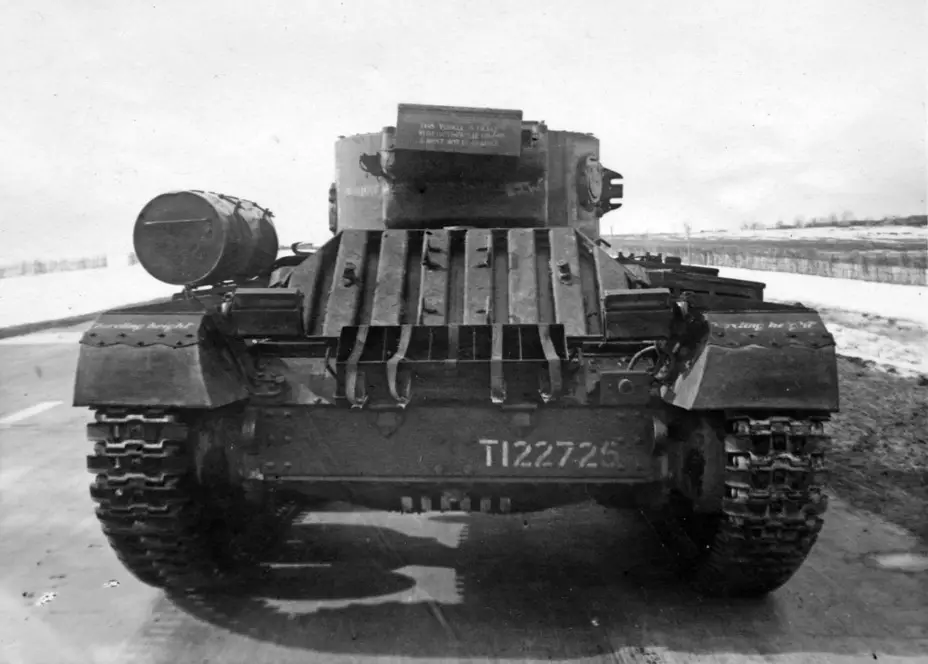
When studying the working conditions of the turret crew, the assessment was quite satisfactory. No complaints were made about the commander place, whom the Soviet experts considered the gunner but in fact, the British had a loader commander. The workspace allowed the gunner to fire comfortably and the aiming mechanisms could be reached without any discomfort. The loader’s place was a little worse. A part of the ammunition was only accessible at certain turret traverse angles. This was only true for the main ammo supply, and the ready rack was not impacted. There were no complaints about visibility. The commander lost his cupola, but the number of MK-IV devices was increased to 3. Two periscopes were installed in the front of the turret, the third in its right rear angle. This gave the loader good visibility backwards.
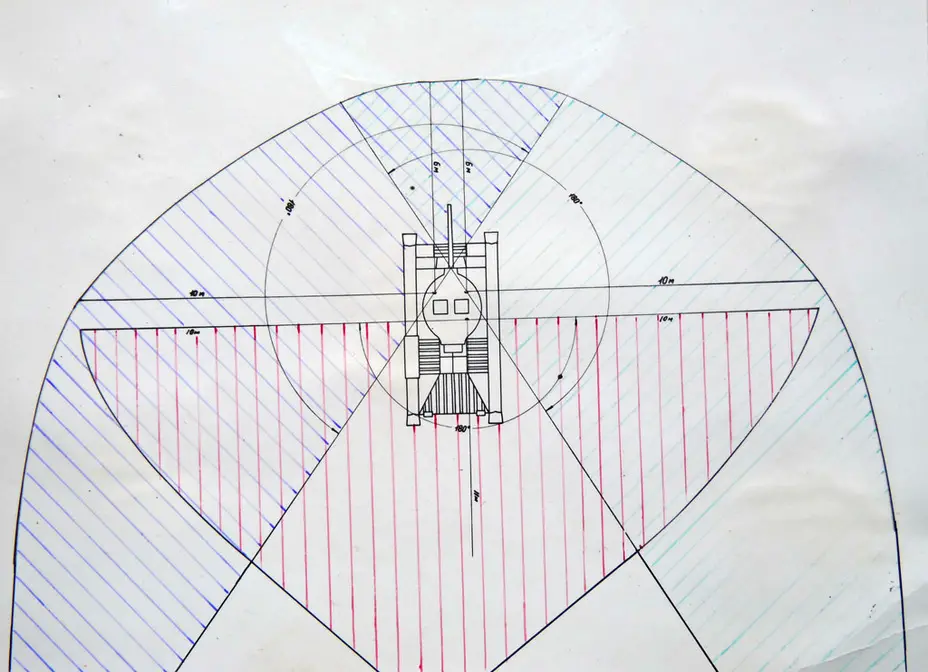
Mobility trials were very peculiar. One of the Valentine IX was located at the Gorky ABT Center, was used for testing. In order not to waste time, the tank was sent to NIBT proving grounds under its own power. In total, the tank covered 500 kilometres, of which 287 went along a snow-covered motorway, 163 along an asphalt motorway and 50 along a country road. The average speed on dirt roads and off-road was 12-16 kph, compared to the 12-15 kph of the Valentine II. Fuel consumption was 136 L per 100 km on the snowy highway and 131 L on the clear highway. The range was 230 and 240 km respectively.
Thus, concerns about the tank chassis were in vain. The few breakdowns on the march were not related to it. As for armament, it turned out to be approximately equivalent to the 6-pound gun of the Churchill III tank.
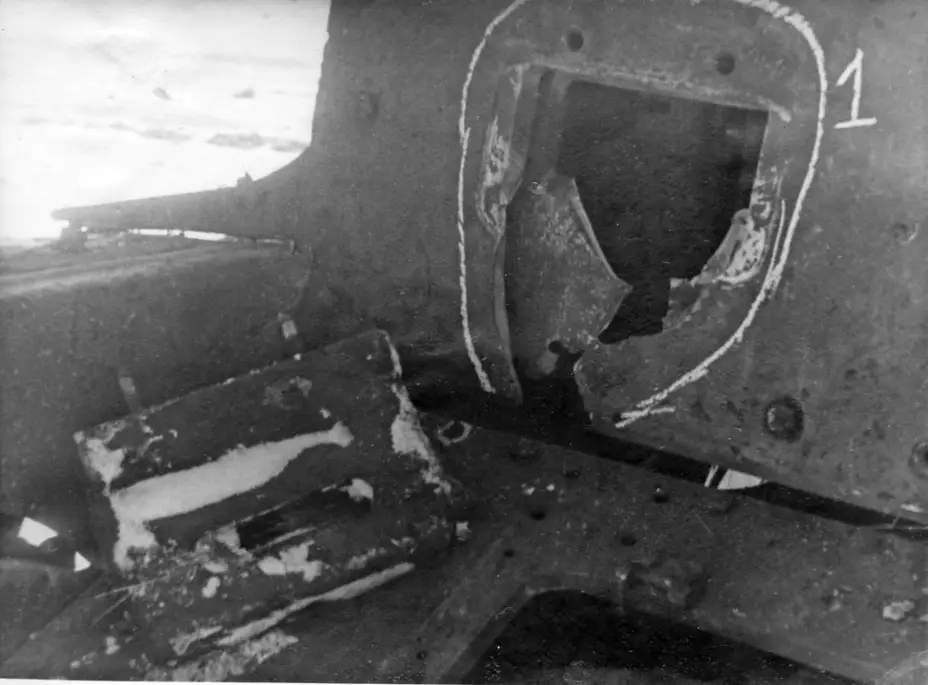
Based on the test results, the following conclusion was made:
- British tanks “Valentine IX” and “Valentine III” are equivalent in their mobility.
- The tank’s armament is intended only for fighting enemy tanks.
- The absence of a high-explosive fragmentation grenade and a machine gun paired with a gun eliminates the possibility of dealing with the infantry and strongholds.
- Testing the reliability of the 6-pounder requires additional testing by shooting on a number of samples.
The last point of the comments turned out to be related to the breakdowns of the 6-pounder gun that occurred during the shooting. This defect was not unique, Churchill tanks had similar problems. It took some time to eliminate the defects of the gun, as correspondence on this issue lasted at least until the end of Spring 1943.
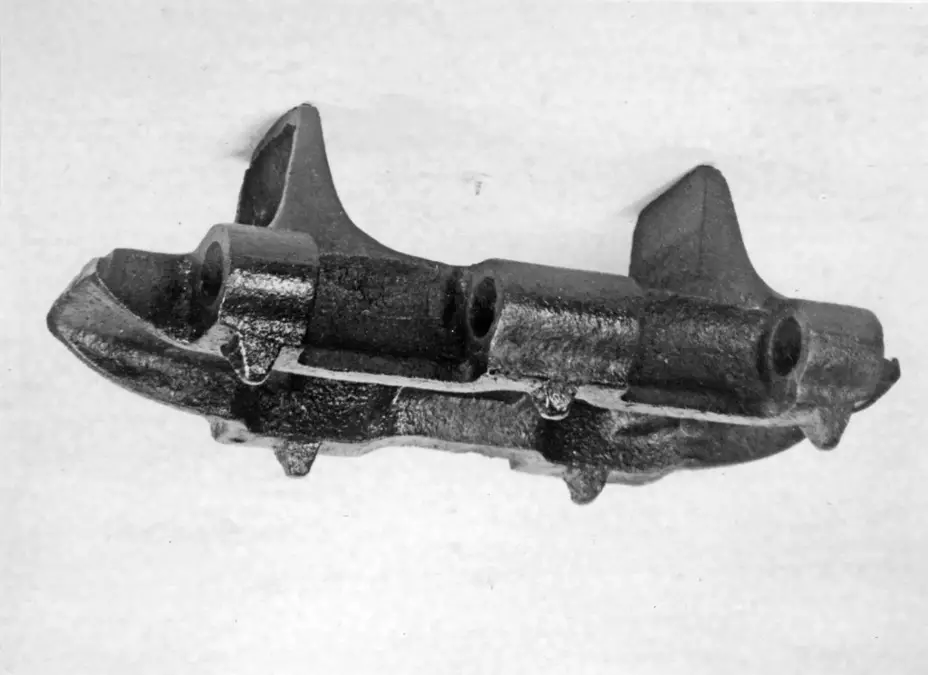
Spring trials were not the last that the Valentine IX took part in. Later, in August of 1943, another tank of this type arrived at the NIBT proving grounds. This time only the running gear was tested, more specifically, the tracks. In the Summer of 1943 the British industry finally remembered the Red Army’s requirement of equipping its tanks with better grousers. Valentine IX tanks were shipped with extra cleats on each track link. Reports soon started coming in from the acceptance teams and front line units. The cleats could not be removed and had many issues, particularly with tearing up paved roads.
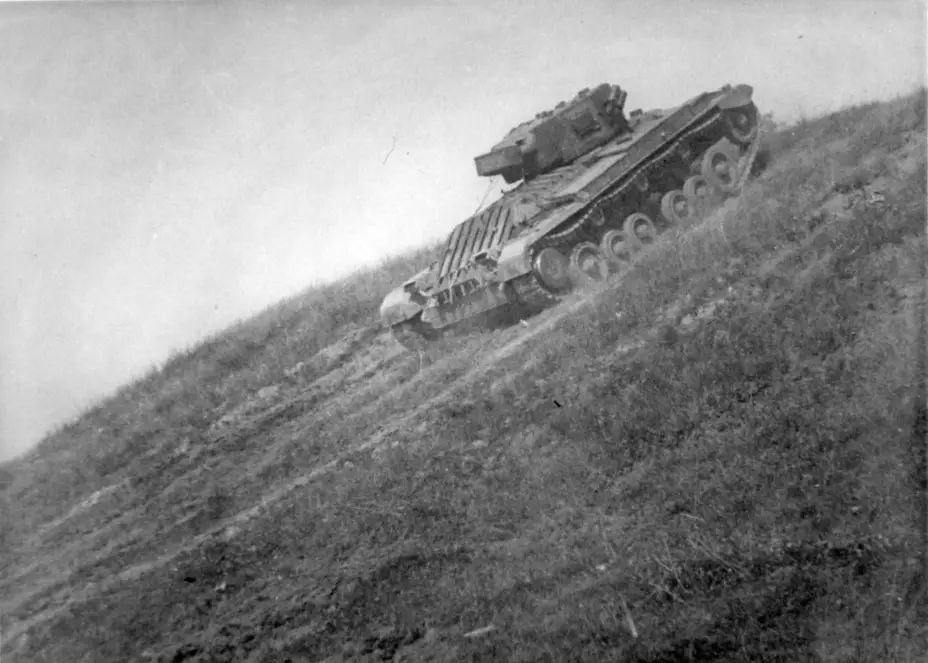
The trials of August 1943 showed very inconsistent results. Both speed data and fuel consumption turned out to be approximately the same for tanks equipped with and without spikes. But after 251 km, the spikes wore down by 8-10 millimetres. While driving on asphalt, the spikes left small dents in the surface and turning resulted in the destruction of the pavement. A passing column of such tanks would obviously leave roads in need of serious repairs.
The appearance of such track links suggests that the British designers did not take into account the mistakes made in the past. Track links designed for the Matilda tank also had a very low lifespan on paved roads.
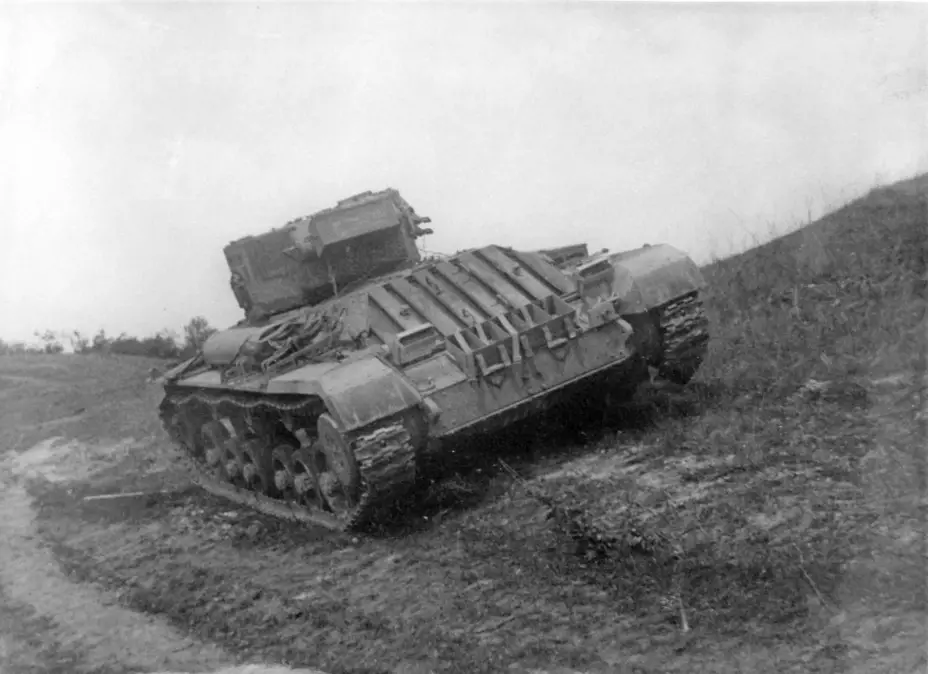
In addition, Summer tests of the tracks with spikes, there were no significant changes in the tank’s mobility. A Valentine without spikes on the tracks had a maximum climb angle of 30 degrees. When overcoming the elevations of the Valentine IX with spikes, the climb angle increased to 32 degrees, then the track would lose grip. As for climbing in softer terrain, the number was the same: 30 degrees. Driving on a tilt was also similar: 29 degrees without grousers, 30 with. After that the track was thrown.
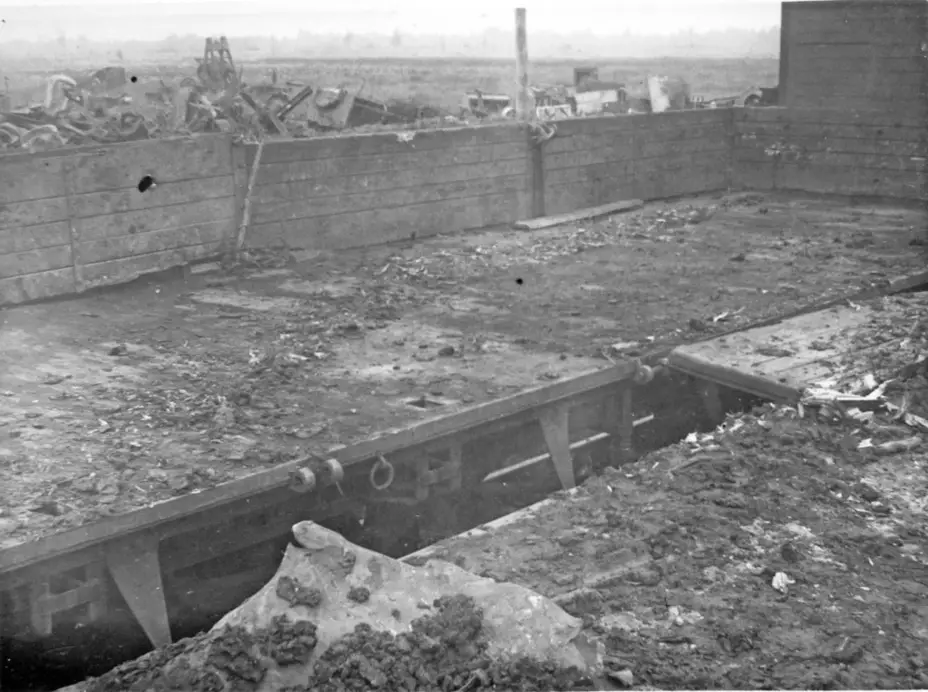
The effects of the new tracks on the surfaces along which the tank was moving were much more notable. During tests, the tank was loaded onto the platform, partial destruction of the floor occurred, and not only wooden but also metal parts. Asphalt pavement also suffered greatly by it.
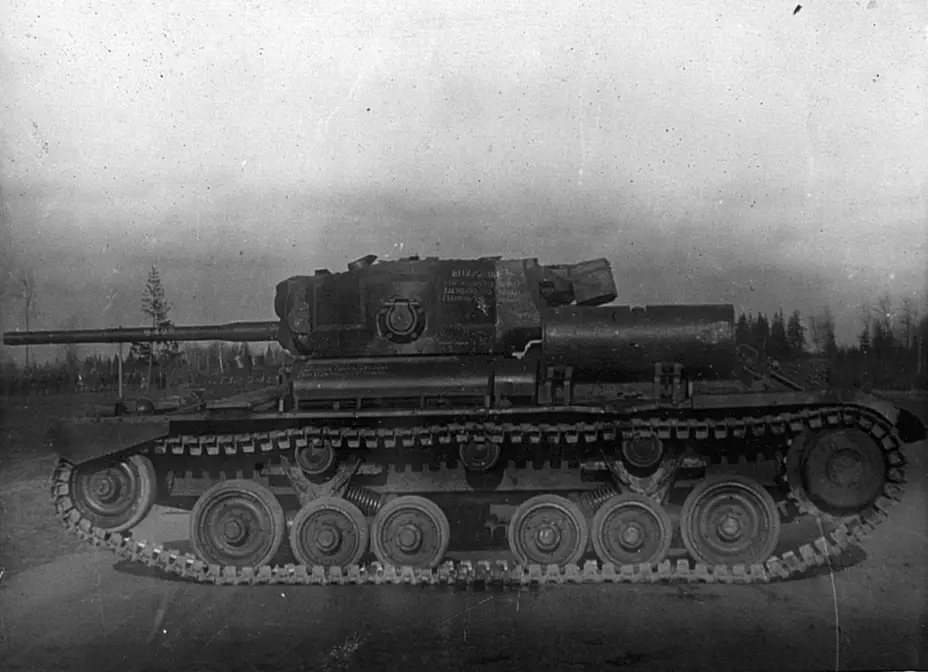
NIBT representatives suggested that the spikes would be more effective in winter conditions. But even here there are some doubts: certainly, on ice-covered areas, the efficiency would be higher, but in other cases, the spikes would obviously lose to the welded on spikes developed in early 1942. In order to reduce the damage to the road, it was proposed to leave spikes only on every fifth track. Whether this proposal has been implemented in practice is unknown. At least, a circular in September 1943 was sent to military representatives.
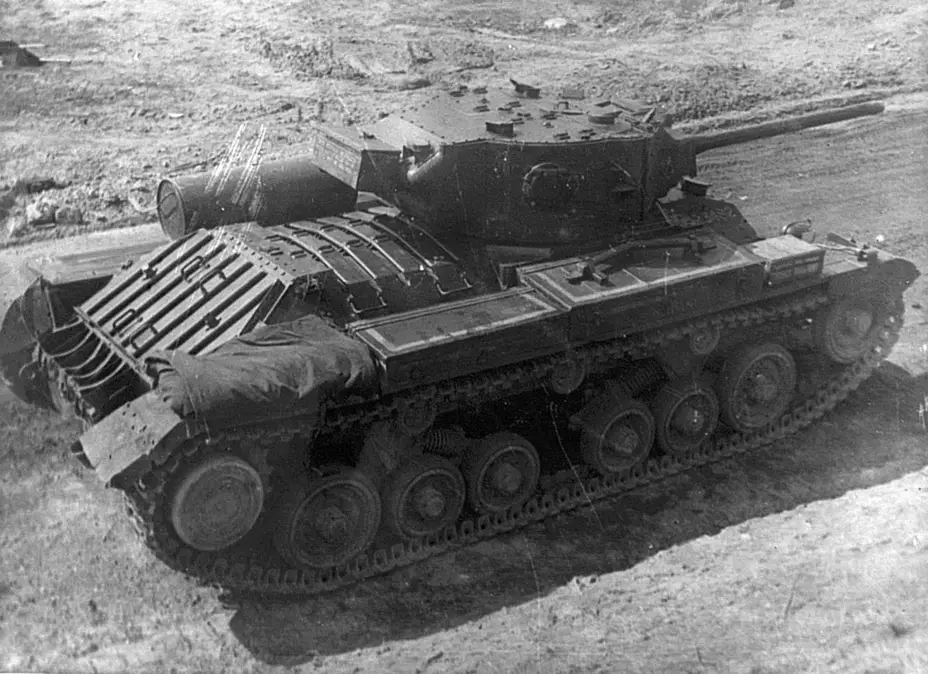
A Valentine X made it to the NIBT proving grounds as well. Tank T.123484 arrived in the USSR with convoy JW-56A on January 29th, 1944, on board the Fort Slave transport ship. Study of this tank did not progress past a technical description. The NIBT photo album has the same description for this tank as the Valentine IX. The introduction of a coaxial machinegun had an effect on the 6-pounder gun: the amount of ammunition decreased to 44 rounds. The tank carried 1800 rounds for the BESA machine gun.
Mixed Composition
Valentines with 6-pounder guns began to arrive at the front in the Autumn of 1943. At first, their number turned out to be small, since in the Spring of 1943 deliveries by the northern route practically ceased. The situation with 6-pounder guns also had an impact on their shipments. Defects observed during training in the Spring of 1943 were the same ones that the British reported: the cover of the cradle and the recoil brake rod became deformed during firing. Issues were reported as late as June 1943, which resulted in some delays with the use of these tanks in combat.
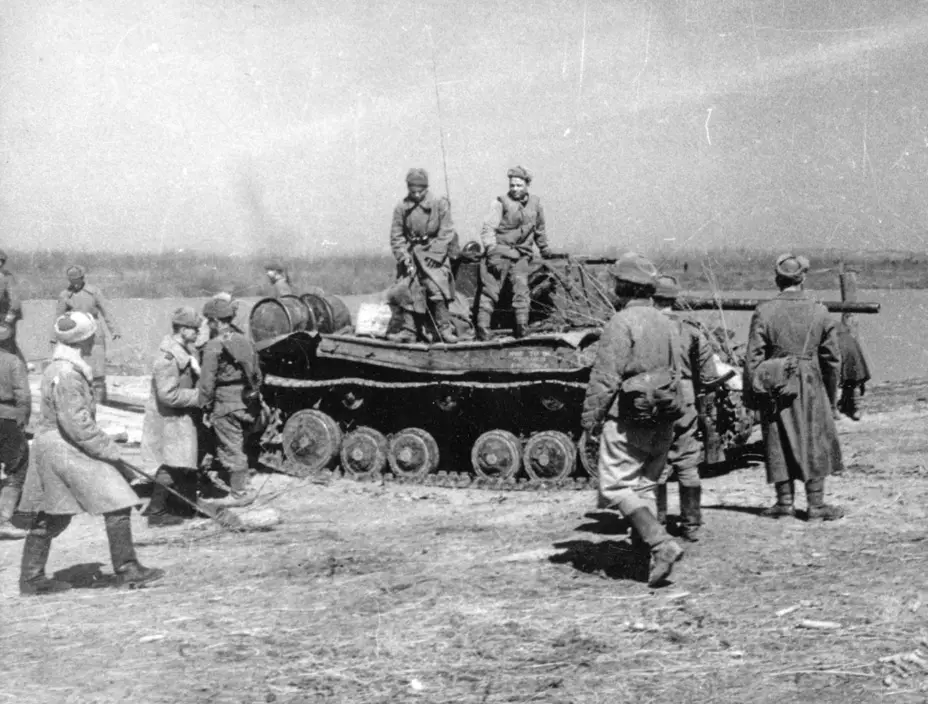
The new tanks caused a mixed reaction in the troops. First of all, this was due to the lack of a coaxial machine gun For this reason, cases where tanks were used in mixed formations, were common. Brigades received 2-pounder Valentines along with Valentine IX tanks. Of course, their effectiveness in the battle against other tanks was much worse, but these machines had a twin machine gun and a breech-loaded mortar. However, such tanks did not have high-explosive fragmentation projectiles in their ammunition. Since the Summer of 1943, the requirements for high-explosive fragmentation become more frequent. And in May there was information about the presence of such shells in the British army. However, no deliveries of high-explosive fragmentation projectiles from England were made in 1943 or in early 1944.
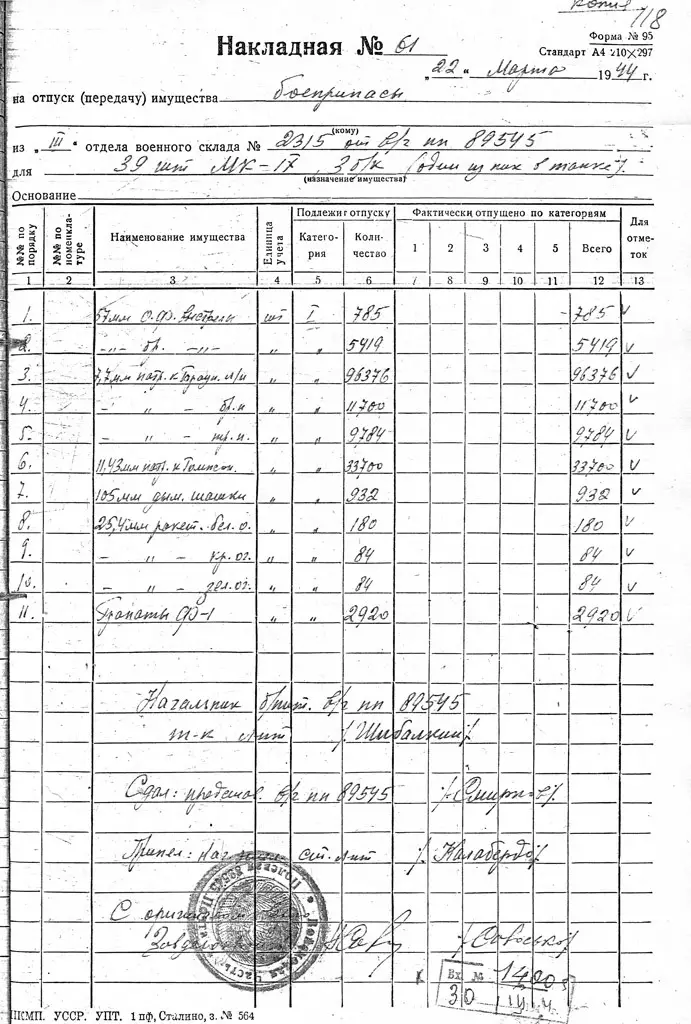
Help came from the United States of America. The fact is that from the end of 1943, American tank destroyers GMC T48 began to arrive in the USSR. They were developed with an eye to supply the British and equipped with 57-mm M1 cannon, an American copy of British anti-tank guns. The same guns were used by the American army and they looked at the lack of high-explosive shells for this gun with surprise and developed their own ammunition.
On March 10, 1944, at the Gorokhovetsky ANIOP conducted tests of British and American shells for 57-mm guns. Shooting from a GMC T48 gun (designated SU-57 in USSR) showed that the shells were identical. This signalled that Valentine IX and X could use high-explosive fragmentation shells. The first delivery took place at the end of March 1944. Ammunition of tanks was completed with armour-piercing and high-explosive fragmentation projectiles in the calculation of 50:50. However, at first, the shipments of HE ammunition were scarce. Because of this, some tanks still only carried AP ammunition in the Spring of 1944. The situation finally improved in June of 1944. Soviet crews often used the Bren gun to fire at ground targets.
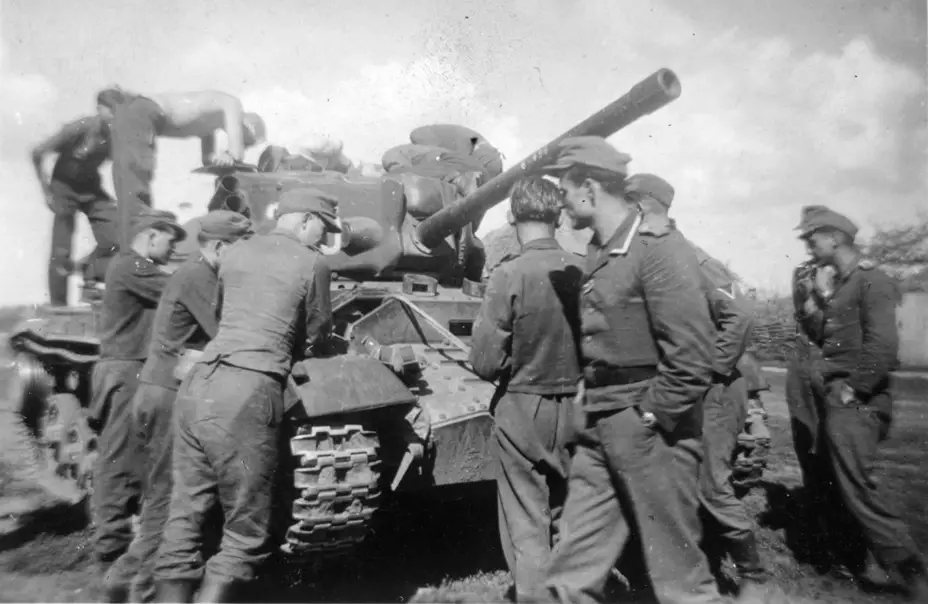
The use of Valentine IX tanks is described in a report, dated Spring 1944:
The introduction of a HE shell permitted the use of homogeneous units. For instance, on March 29th, 1944, the 54th Independent Tank Regiment received 20 of these tanks when it was reformed. Only 8 HE rounds were issued per tank, but this was a start. The regiment was previously equipped with T-80 tanks, so it is doubtful that they viewed this as a downgrade. The regiment largely faced enemy infantry and artillery when fighting alongside the 12th Guards Cavalry Division. By May 14th, it had 12 remaining Valentine IX tanks. These tanks were called MK-IX, MK9, or Mk-9 in documents. Note that tank regiments in cavalry units had a lot of this type of tank. For instance, the 61st Independent Tank Regiment had 15 Mk.IX tanks as of July 8th, 1944.
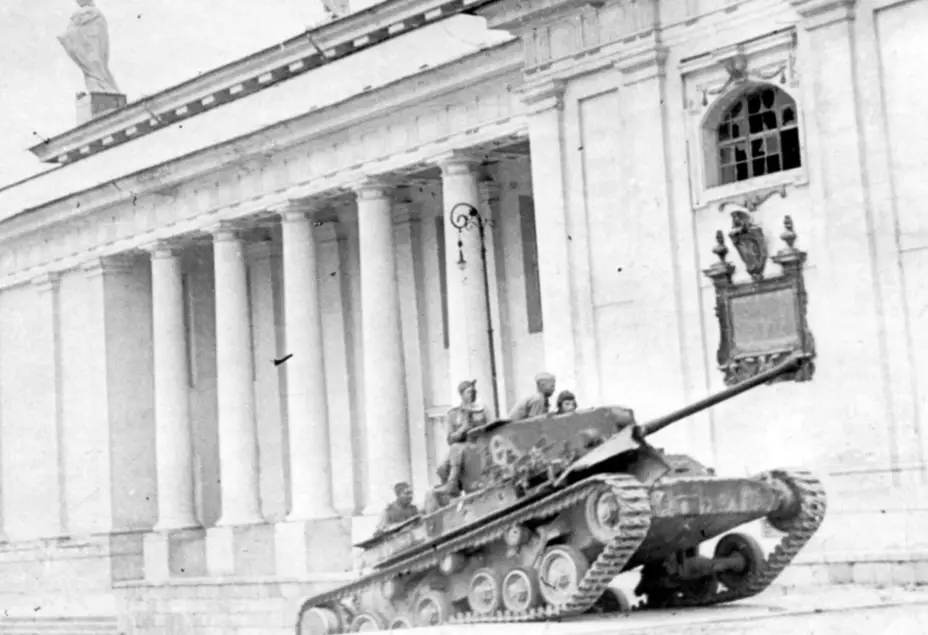
Despite some issues, the light tanks with 57 mm guns were remembered fondly in the Red Army. The tank was low to the ground and quite during motion. It could handle its job well. The slow speed was relative, and often the difference in speed was not great when driving on dirt roads or off-road. Valentines were also very reliable, especially when used according to instructions. Many of these tanks remained in service into 1945.
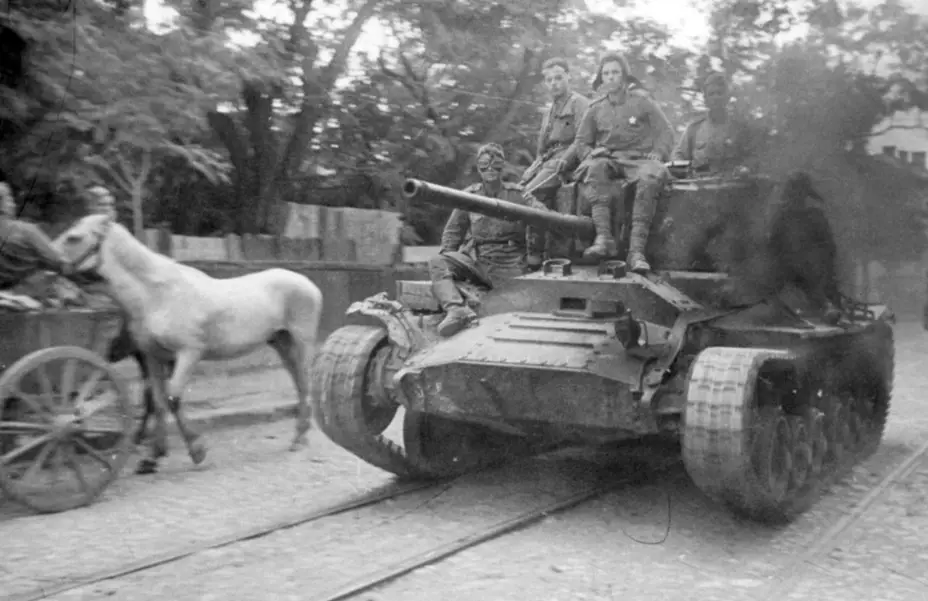
The 151st Independent Tank Regiment is a good example of the use of the Valentine IX in combat. This tank regiment had a mixed composition: in addition to 6 Valentine IX tanks it had 4 Valentine III and 10 “M3 light” (likely the Light Tank M3A1). On March 26th, the regiment crossed the Gron river alongside the 9th Guards Cavalry Division. The tanks drove for 48 km that day and settled down in near the Rendva village in Slovakia. Fighting alongside the cavalry, the tanks pursued their retreating enemy, periodically getting into skirmishes. 30 German soldiers and officers were killed on April 3rd during the battle for Trnava. Šaštín-Stráže was taken on April 4th at the cost of one Valentine III and 1 M3 Light. 4 crewmen were killed, 5 were wounded.
Battles for Lanzhot in Czechia were much more heated. The regiment took an active part in the fighting for the city on April 11th, losing one Valentine IX and 2 Valentine III burned up and 1 Valentine IX and 1 M3 Light knocked out. One enemy tank was destroyed with return fire, one knocked out, and up to 80 soldiers and officers plus one armoured troop carrier were destroyed. Fighting for Trvonice cost two knocked out Valentines and two M3 Lights. In return, the Soviet tankers destroyed 145 soldiers and officers, an anti-tank gun, and an APC. The regiment fought on until April 19th, when orders were given to transfer the tanks to the 9th Guards Cavalry Division. During its fighting career, the regiment claimed 5 burned up and 1 knocked out Panther tanks and 380 enemy soldiers and officer.
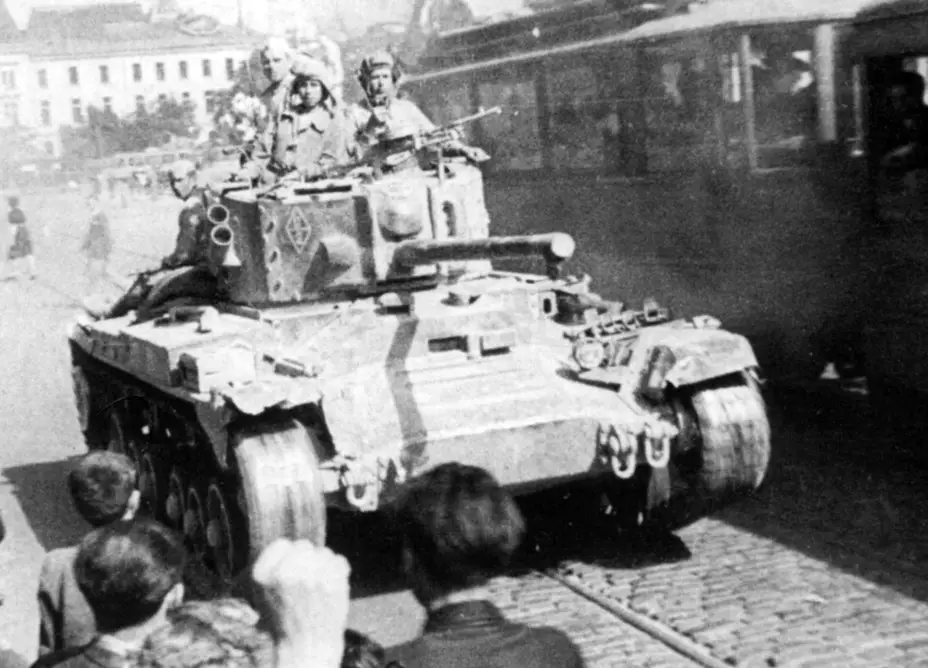
Only one Valentine IX from the Red Army survives to this day. This tank fell into the Varta river in January of 1945. Tank T.122834 produced by Elswick Works in February of 1943 came into the USSR through Iran on December 29th, 1943. Presently it is being restored by a Polish collector.



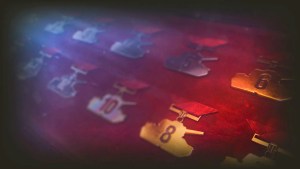

Loving your historical articles amazing stuff and makes for good reading big thumbs up DuarteTeixeira
New tier 8 soviet premium I see
Why? The tank is already in the game as a British Tier IV Light Tank.
Thanks for article. Love the Valentine
after the Progettto 46… Valentine !
We didn’t penetrate their armor ! hahaha XD
The picture of the track links appears to be upside down. On purpose?
I love anything to do with the Valentine. Other WOT players still don’t believe I got my first Kolobanov with it. Got my second with an M53 arty…go figure.